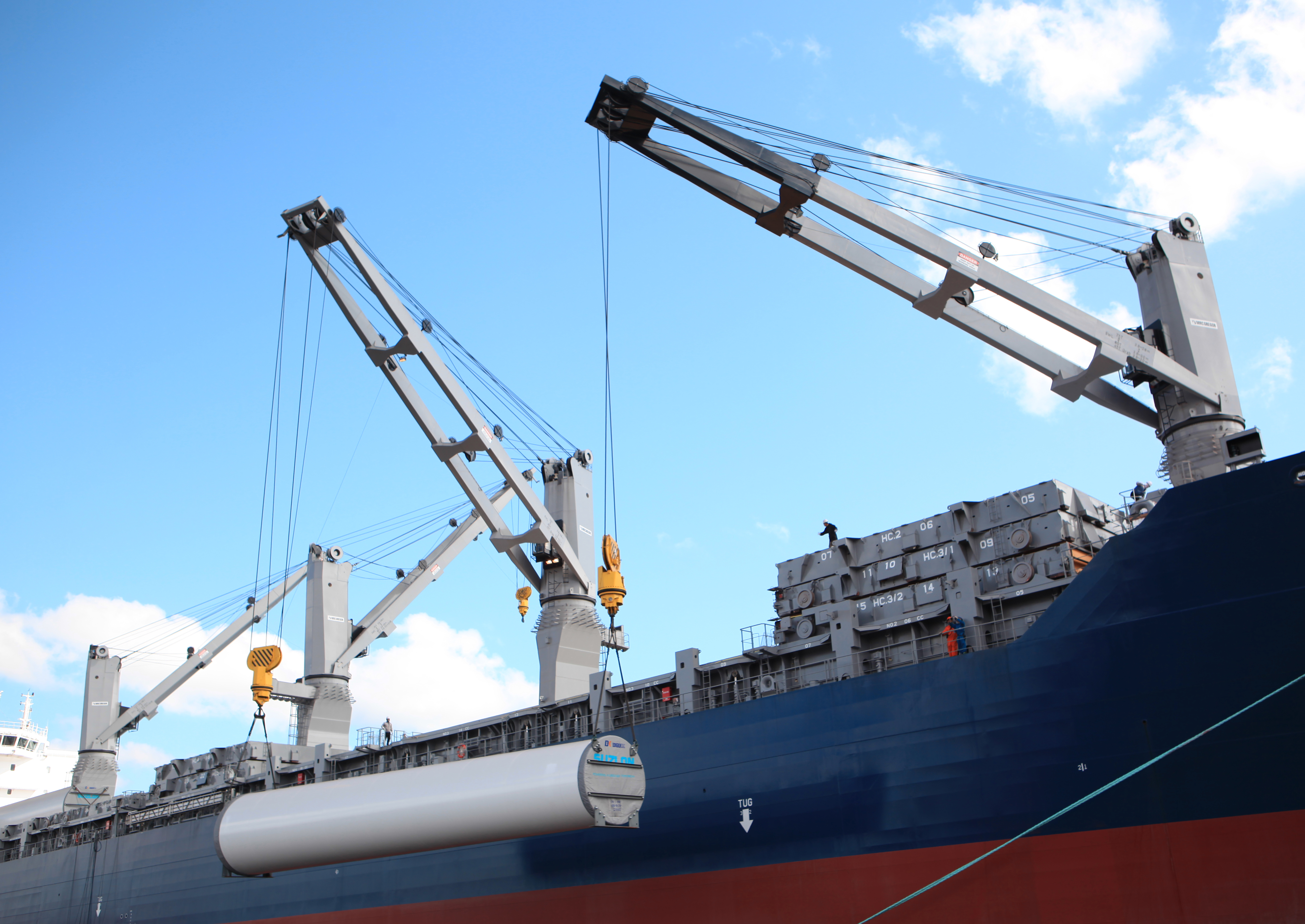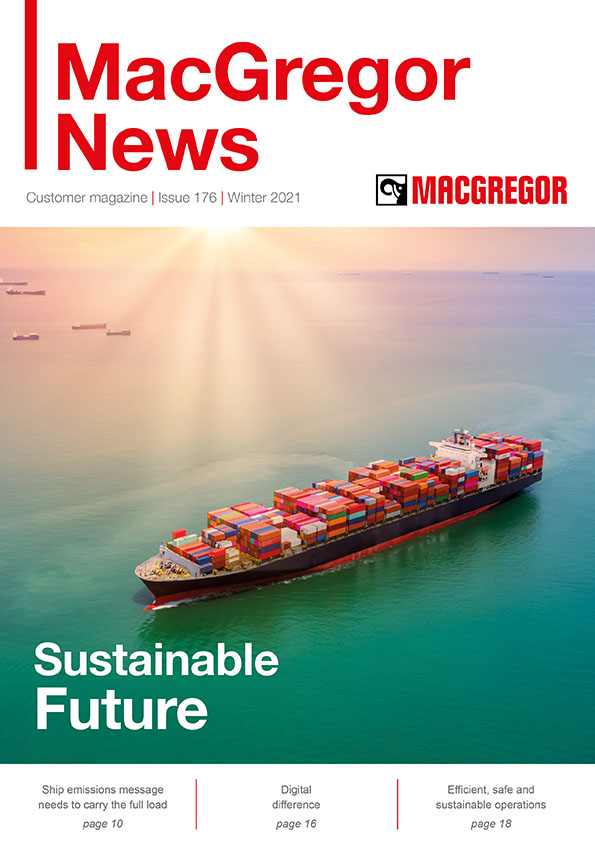More sustainability for 50% less energy
17 Dec 2021 Reading time calculated text
Practical experience demonstrates that the gains electric cranes achieve in cargo handling efficiency, emissions and maintenance costs can be given specific values.
In MacGregor we design, develop and provide through-life support for maritime cargo and load handling systems and solutions. Through these systems and solutions, we help our customers to reduce emissions and increase their profits.
We do this by providing environmentally sustainable electric solutions that also improve operating efficiency. In addition, by enabling customers to carry more cargo or reduce unnecessary moves, emissions are lowered and efficiency increases further.
The Breakbulk Optimiser and Cargo Boost services are two great examples of this:
- Breakbulk Optimiser optimises cargo stowage and utilisation rates in a multiport set-up
- Cargo Boost increases cargo carrying capacity by up to 15% while reducing CO2 emissions by up to 10%
How to reduce emissions through electrification
Emissions are reduced through increased electrification and our electric cranes are a good example of this.
Variable frequency drive (VFD) technology improves efficiency as the motor is driving the winch directly, and there is consequently no loss of energy due to energy transfer. This means that energy consumption can be reduced by up to 50% compared to closed-loop hydraulic cranes, and fuel consumption significantly reduced.
Additionally, the power consumption of electric cranes during standby is approximately 80% lower than hydraulic cranes, which is a major benefit for project cargo with prolonged lashing and securing times. Electric solutions can also eliminate the risk of hydraulic oil leakage.
How to improve profitability through electrification
Profitability can be improved as electrically driven solutions deliver improved control precision and higher performance.
Electric solutions also yield capital investment and operational cost savings:
- Potential savings in capital expenditure. For example, when considering electric cranes early in the design phase, the size of the generator can be changed to a smaller one and the total vessel cost can be reduced.
- Lower maintenance and service costs. We have calculated that over 15 years the average service cost for electric cranes is 22% lower than for hydraulic cranes.
- Superior cargo handling efficiency. Loading and unloading, especially in bulk and container handling, can be 50% more efficient as the electric cranes operate at higher speeds and with improved precision. Less time is needed in port and money can be saved on fuel and port fees.
The preferred choice for sustainable cargo handling
Electric solutions are the direction in which the world and maritime industry are going.
There are also other advantages related to electrification in the form of data and additional functionalities. For example, electric cranes can be connected to the OnWatch Scout condition-based monitoring and predictive maintenance service, which increases the flow of information and moves from the reactive support mode to proactive mode. We can monitor, analyse and provide guidance about performance by streaming operational data from the vessel to shore and a remote support centre.
There is also the ability to include several automation functionalities such as Auto-Drive and Auto-Tandem, which will improve efficiency even further.
Electric solutions offer a wide range of benefits for shipbuilders, owners and operators that are good for business, and the environment.

This and further articles in our latest edition of MacGregor News 2021 include:
- Ship emissions message needs to carry the full load
- More sustainability for 50% less energy
- Containers on bulk carriers - the MacGregor solution